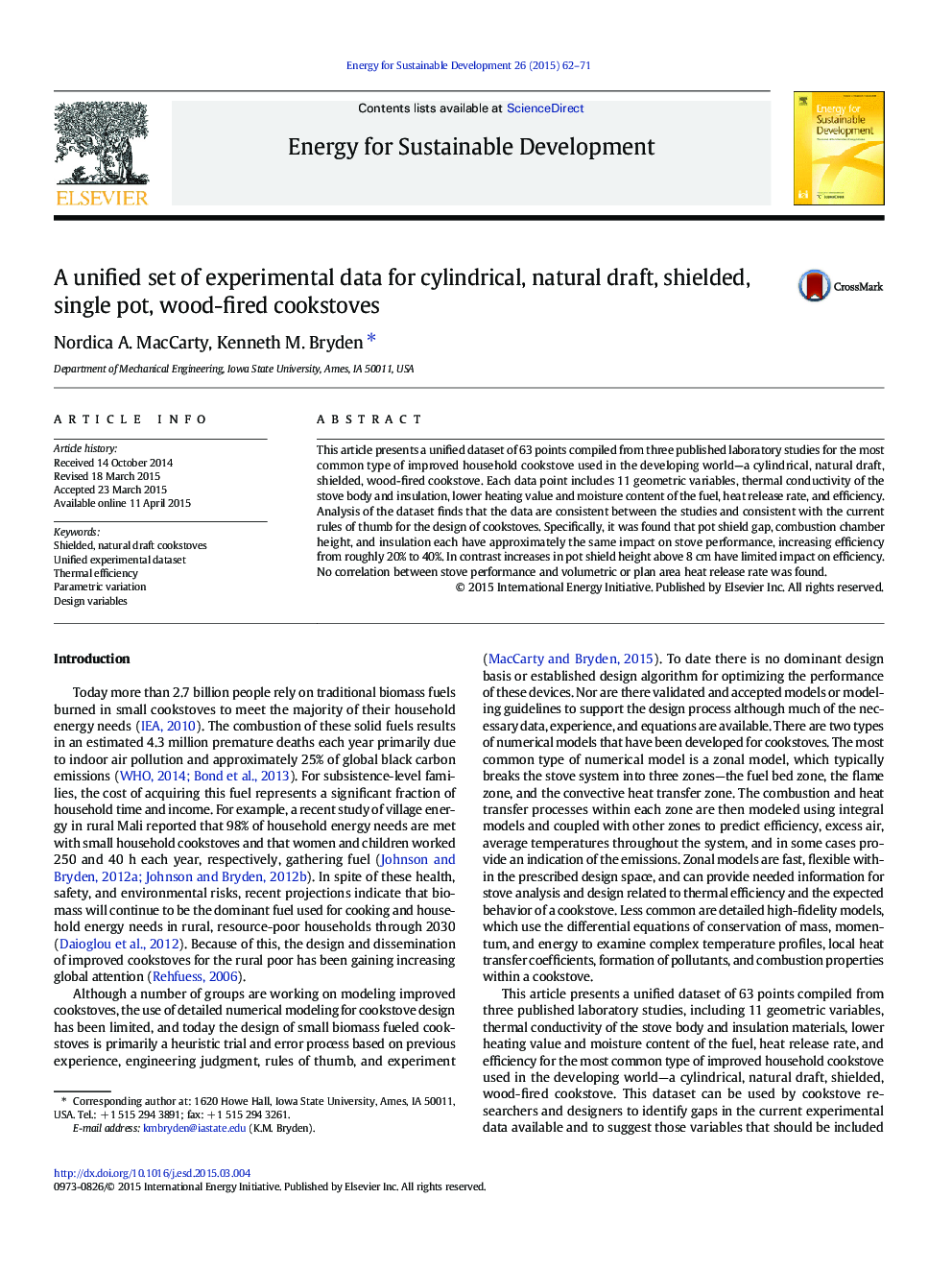| Article ID | Journal | Published Year | Pages | File Type |
|---|---|---|---|---|
| 1046836 | Energy for Sustainable Development | 2015 | 10 Pages |
•A dataset compiled from 3 studies for common biomass cookstoves is presented.•The dataset includes 63 points with 15 design variables.•Pot shield gap, combustion chamber height, and insulation roughly double efficiency.•After about 8 cm, increases in pot shield height have limited impact on efficiency.•No correlation between efficiency and heat release rate was found.
This article presents a unified dataset of 63 points compiled from three published laboratory studies for the most common type of improved household cookstove used in the developing world—a cylindrical, natural draft, shielded, wood-fired cookstove. Each data point includes 11 geometric variables, thermal conductivity of the stove body and insulation, lower heating value and moisture content of the fuel, heat release rate, and efficiency. Analysis of the dataset finds that the data are consistent between the studies and consistent with the current rules of thumb for the design of cookstoves. Specifically, it was found that pot shield gap, combustion chamber height, and insulation each have approximately the same impact on stove performance, increasing efficiency from roughly 20% to 40%. In contrast increases in pot shield height above 8 cm have limited impact on efficiency. No correlation between stove performance and volumetric or plan area heat release rate was found.
